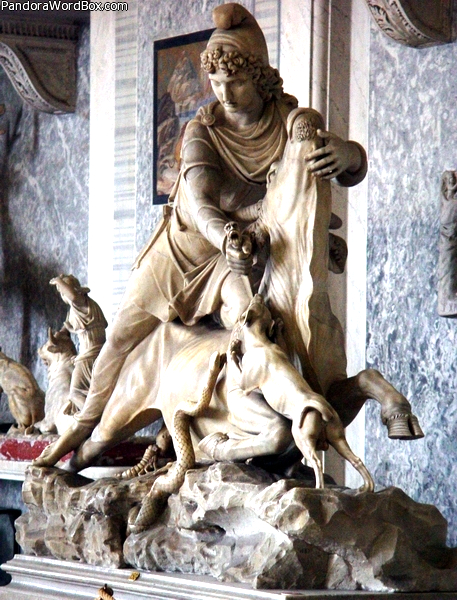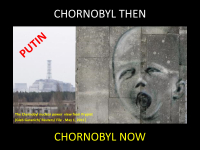Our websites offer information mostly for educational purposes with no intent to alter health care protocols nor to serve as a sole source of medical information.
Always seek the advice of your local health care provider.
|
×  Get the Point! PAIN – WOMAN – UKRAINE – PUTIN MOTHER – SISTER – SPOUSE – MOTHER RUSSIAN WAR – HOLOCAUST – GENOCIDE |
MITHRA - WHY IS SACRIFICE NECESSARY? - WHY IS BLOOD SPILLING CENTRAL TO RELIGIONS

"Mithra Sacrificing a Bull " Vatican Museums, Vatican, Rome , Italy
Mithra, a god born of a rock, was commanded by Apollo (Helios) to kill the sacred bull (symbol of generation or fertility). In this task, Mythra was hindered by a dog, a snake, and a scorpion, who by ingesting the bull's precious blood were able to spread evil among all the living. (Note the scorpion at the testicle of the bull).
The birhday of Mithra is December 25, an imporant religious date in the Roman world, where freedom of religion was upheld and Mithraism was most popular. To blunt the greater popularity of Mithraism, Christian church leaders moved the day of nativity of Jesus or Nativity (Navidad or Christmas) to coincide with that of Mithra. The strategy failed, but once Christians gained power, Mithraism was suppressed by force. Arguably, the popularity of Mythraism rested on its syncretic nature (blend of prevailing beliefs and traditions). Evidence of its populartiy is found even in the most distant corners of the Roman Empire. Perhaps, allegations that the St. Peter's Basilica in Rome stands on the site of a Mithraic altar are disputable, but that St. Clemente's Basilica, among the oldest in Rome, stands on top of a Mithraic temple is a fact. The site was dedicated as a Christian worship site the legendary St. Clement. The Vatican sustains that St. Clement was the 3rd pope, although Papal elections were established after 590. In any case, if so, St. Clement was a contemporary of St. Paul and Peter. Apparently, he was banished by Emperor Trajan (98-117) to work in the mines of Crimea. (Hadrian imported from Crimea pre-carved white marble columns for his temple standing in Rome). Legends also assert that the remains of St. Clement was recovered by Saints Metodius and Cyril and returned to Rome and placed in a Church built by Pope Siricius c. 380s. on the site of the Mythraic Temple. The Temple was vacated after the victory, in 388, by the Christian Theodosius over Maximus Frigidus who stood for Roman traditional religious tolerance. Visitors to the church can visit the subterranean Mithraem and notice figures of other gods honored by Mithraism such as Helios, Selene, and Serapis (Healing, Medicine) (reliefs of the fist two are perceptible). The violent supression of Mythraism by the triumphant Christians is also evident in the not far distant the church of Santa Prisca. This church also stands on top of a Mithraic temple. Dutch archeologists who excavated the site found fragments of smashed statues of Mithras and Serapis and damaged wall frescoes hacked with axes. But neither axes nor dogmatism erased Mithra from our modern vocabulary. Christian Bishops call their crowns "Mitre" and physicians often focus on disorders of the cardiac "mitral" valve.
In 1084, the original St. Clement church was burned by invading Christian Normans led by Robert Guiscard (Viscardus) who pillaged Rome. In 1108 the church was rebuilt as it stands today, and Guiscard was rehabilitated as the champion of "western" or Latin Church who resisted the authority of Byzantium over Rome. In fact, Guiscard endorsed the "Great Schism" of 1054 that permanently split Christianity into a Latin from "Eastern Orthodox" faction. With time, St. Clemente became a repository of great artistic works including ancient mosaics and murals by Giacomo Catetani, Arnolfo di Cambio, Massachio, and Sassoferrato among others. These murals also show arguably the oldest inscriptions in vernacular Italian. Since 1667 the Church is under care of Irish Dominicans. One of them, Fr. Mullooly, begun in 1857 the excavations that revealed the ruins of the original church and the Mithraic temple underneath it. Adjacent ruins apparently are those of the Moneta buiding (Roman mint) that burned during the great fire of 64 when Nero ruled. Some also assert that St. Paul lived in the vecinity.
English speaking visitors may be interested in the story of the ascent of Maximus to power. Apparently, the brutal use of force by triumphant Christians to crush of Mithraism, which was popular among soldiers, provoked a mutiny of Roman legions in London. Miximus was defeated and beheaded by Theodisius. Once again, but only temporarily, Rome became ruled by Byzantium. Eventually, Rome became independent, the Bishop of Rome became Pope and an absolute ruler of an the Religious Roman State and the Christian Nicene creed the only one accepted by the state. (The first ecumenical council of Christian Bishops was organized by Emperor Emperor Constantine (272-337) and took place in Nicea in 325).
20210329 ww
|






